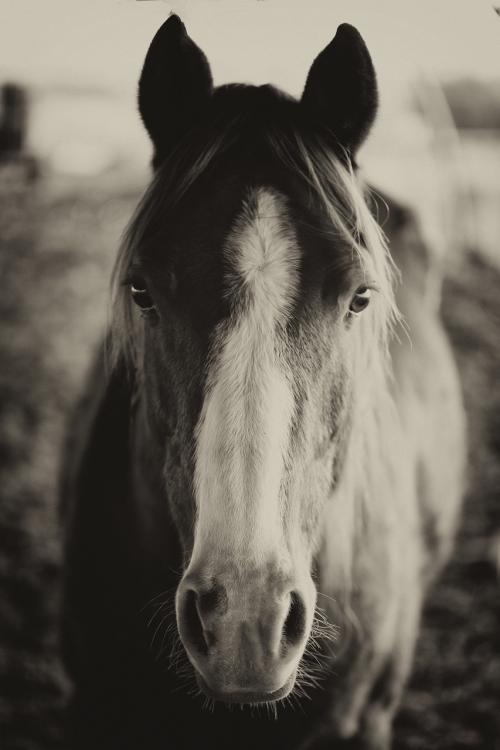Caring For Horses At the End of Life
How to Prepare an Advance Directive for Your Horse
- Create a document with the horse’s name, age, and description. Include a photograph.
- If relevant, include the name of your insurance company, policy number, agent’s contact information, and type of policy (i.e., major medical vs. mortality).
- Designate an emergency contact and provide multiple contact numbers.
- Include contact information for your primary care veterinarian and a backup veterinarian if available.
- State your intentions for your horse in the case of injury or illness if you are unreachable. Include details regarding referral for intensive care and a financial cap.
- Designate your emergency contact and veterinarian as agents who
- can authorize humane euthanasia
- if you are unreachable, your horse
- is suffering, and stabilization or transportation to a referral center are not possible or humane.
- Indicate your aftercare preferences.
- Indicate if you wish to keep a memento (shoe, piece of mane or tail).
- Provide your barn manager with a copy of this information.
- Schedule time with your veterinarian to talk about these plans. Provide a copy of the advance directive for their records. Update the document annually.
Horses occupy unique positions in our lives, and losing them is heartbreaking. They deserve dignity in death as well as in life, and doing what is best often involves difficult decisions. Gathering information and making plans ahead of time can reduce stress for you and your horse when the time comes.
“Even when we know our horse is approaching the end of life, we are never prepared for the loss,” said Dr. Claudia Sonder, Director Emeritus of the Center for Equine Health. “The turmoil of having to make difficult decisions under pressure can open the door for self-doubt and regret. Walking through the end of life plan with your veterinarian in advance ensures a mutual understanding of quality of life signals, your hopes for those last moments, and a review of the logistical concerns of aftercare. One of the greatest gifts for a horse is a gentle exit to a life well lived.”
When Is It Time?
There are different reasons to consider euthanasia, or the humane termination of life. Sometimes the decision is in response to an emergency. Other times it is due to chronic and progressive conditions that worsen over time.
General humane endpoints include the development of conditions that result in untreatable excruciating pain, a 20% decrease in normal body weight, or the inability to reach food and water. Justification for euthanasia for humane reasons should be based on medical considerations and quality of life issues for the horse.
Quality of life is a uniquely individual experience. While health is an important aspect of defining quality of life, it should also include emotional or psychological discomforts such as fear, anxiety, boredom, frustration, loneliness, and depression. Conversely, pleasure derived from physical contact, eating, social companionship, and mental stimulation is relevant as well.
Owners often fear that they will not know when it is time. However, most have a threshold at which point the decision becomes more obvious.
“Horses are prey animals and their social awareness is key to their survival from an evolutionary perspective,” said Sonder. “They are aware of their herd mates and seek cues to understand the safety of their situation. One of the greatest gifts we can give them at the end of their life is confident leadership. I ask my clients to consider that approach as a final gift to their friend. The feedback has been overwhelmingly positive. There is a sense of pride in summoning that strength when they need it the most.”
Disposition of the Remains
Practical considerations, such as how to dispose of the horse’s body, can be particularly challenging when dealing with loss. Make these arrangements ahead of time if possible. There are often local regulations regarding disposal procedures. Rendering, burial, and cremation are common methods, but may require special regulatory approvals.
If your horse is euthanized at a veterinary hospital, you may elect to have a necropsy performed to reveal the cause of death and contribute to science and education.
The Grieving Process

Keeping horses happy and healthy is a team effort that includes trainers, riders, grooms, veterinarians, farriers, and others. All of these providers can experience grief from the loss of a horse. The stages of grief associated with human loss, including denial, anger, bargaining, depression, and acceptance, can occur following the loss of a horse. Some may also feel guilt, relief, isolation, withdrawal, and loneliness. Pet loss programs or counseling can offer support. Pet loss resources, including a support group, are available through the UC Davis School of Veterinary Medicine.
“Our Pet Loss Peer Group attendees share stories of their beloved departed pets, current struggles, thoughts on their feelings and their loss,” said Soli Redfield-Martin, Pet Loss Grief Recovery Specialist at UC Davis. “While navigating through the grieving process, it can be comforting to know you are not alone, and that you have support in a non-judgmental, caring atmosphere.”
Often, the barn environment creates a strong social support network. Barn members can provide support by:
- Sharing photographs, poems, or planting memorials
- Making a donation as a memorial
- Reaching out to talk, share stories, and listen
Life for all living creatures comes to an end. While it is easier to avoid thinking about it, we have the ability to make that end lovingly easy for our cherished animals.
This content originally appeared in the October 2013 Horse Report. The full resource is available at https://ceh.vetmed. ucdavis.edu/caring-horses-through-life-and-death.
